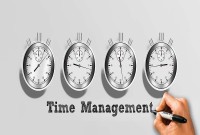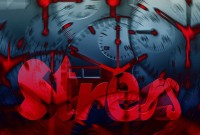- Home
- Business Processes
- Industry Knowledge
- Aerospace Industry
- Automotive Industry
- Banking Domain
- BFSI Industry
- Consumer/ FMCG Industry
- Chemicals Industry
- Engineering & Construction
- Energy Industry
- Education Domain
- Finance Domain
- Hospitality Domain
- Healthcare Industry
- Insurance Domain
- Retail Industry
- Travel and Tourism Domain
- Telecom Industry
- Leadership Skills
- eLearning
- Home
- Leadership Skills
- Change Management
- Types of Business Change
Types of Business Change
Change is a complex phenomenon. There are different types of changes that are going on around us. Listed in this article are twelve areas in which change arises and bring some classification to it. However one may classify the change, the various heading is always interrelated. The change could be triggered by market changes, technological changes, or organizational changes.
There are several models of organizational change. A model is an integrated way of explaining why and how change takes place, based on a known and acceptable basic explanation (theory) of relationships of several aspects involved. It would be obvious that there can be different ways of explaining the change, depending on what theory we follow or use.
1. Trickle-Down Model
Two contrasting models of change are the "trickle-down" model vs. "identity search" model. In the trickle-down models of change, the change is driven by the elite group. The organizational change occurs because the top management takes a decision and adopts some new ways (technology, systems, structure, etc.) and others follow it.
2. Identity Search Model
According to the Identify Search Model, the urge to develop one's own uniqueness and identity will make the group or individuals accept change.
3. Internal Change
Another way is to look at change is to look for the external or internal forces as determinants of changes. Change can be a result of internal factors like changes in the direction and objectives and ideology of a company or a workforce.
4. External Change
The changes, which occur within the business, can result from external environments such as the development of technology, globalization of markets, or new competitors on the market.
5. Adaptation Model
Business models change as managers engage in more mundane adaptation in response to external changes. The adaptation model emphasizes the role of external factors (for example a new government policy, or competitive environment) in producing a change in organizations (more emphasis on quality, restructuring, etc.). To respond positively to environmental changes, the person must adapt.
6. Proactive Model of Change
According to the proactive model, the explanation comes from within the organization (the decision of the organization to set an example, to be a leader, to anticipate the future) and act and change itself in response to such an internal urge. Companies that take a proactive approach to change are often trying to avoid a potential future threat or to capitalize on a potential future opportunity. Corrective action was being taken before a market decline or before technology became obsolete. Positive action was being taken to seize competitive advantage before someone else did.
7. Structural Model of Change
Yet another explanation of organizational change may lie in the emphasis on the structure or the process. Structural change refers to a dramatic shift in the way a country, industry, or market operates. Successful change, according to the structure model, would require preparing the necessary structural details (technology, design of the organization, systems), and introduce them systematically.
8. Process Model of Change
The process of change entails creating the perception that a change is needed, then moving toward the new, desired level of behavior and, finally, solidifying that new behavior as the norm. People will also change, according to the process model, successful change can be planned by helping people to develop process competencies (ways of planning, decision-making, problem-solving, collaborating, communicating, etc.), and then people will find new ways of organizing, etc.
9. Adaptive Change
Adaptive change requires new learning for problem definition and solution implementation. Adaptive change requires auditing of existing systems, roles, and responsibilities. This process can often result in essentially rebuilding the entire company by redefining job descriptions, consolidation, elimination of overlap, and creating greater efficiencies. This involves the reimplementation of a change in the same organizational unit. Adaptive change is not considered threatening.
10. Innovative Change
An organization needs to constantly innovate to succeed. Innovation is about making things better, faster, or cheaper. Dynamically continuous innovation affects the way in which the company adapts to changing market conditions. This involves changes that are generally new and unfamiliar. The innovative changes create a kind of uncertainty and fear in organizations.
11. Radically Innovative Change
Radical innovation is an invention that destroys or supplants an existing business model. Radical innovation is the long-term growth strategy for revolutionary business transformation. The concept of radical innovation is about leveraging core competencies for the future and this is the most intimidating type of change. This type of change is most resisted in organizations. Radical innovation creates such a dramatic change in processes, products, or services that they transform existing markets or industries, or create new ones. Implementation of a radical change in an organization requires a long-term strategy.
12. Reactive Change
This is a change brought about by a sudden or unplanned event. Whereas the planned change is a systematic, deliberate change in the way part or all of an organization functions. In planned change the focus is on processes, people, or technology; and one person, a project team, a department, or the entire firm can be involved in the change process.
Related Links
You May Also Like
-
David Kolb produced this popular model for learning in 1984. The model suggests four stages of learning which most learners go through in order to learn effectively. Leaming is itself a process of change. Something is added to our perception and prepared us for the next impression, which will change our understanding yet more, however minutely. The Kolb contribution is a significant one because it practically equates change and learning.
-
Productivity is defined not in terms of the number of goods produced, but in terms of value-added per employee. Customers don’t really buy goods and services but in fact, they buy a value - something they value. The future is all about tangible products fulfilling intangible needs. Ideas like this can transform a business and provide them a competitive advantage to thrive in the future.
-
Listening is the foundation for good communication. It is also the hardest skill to master. Do you listen to confirm what you already know, or do you listen to explore and learn new things? How can we create receptive communication as a listener? The real art of listening involves awareness and sensitivity to the feelings of the speaker because it is at the feeling level that genuine connection, relationship, and healing occurs.
-
Charisma is a certain quality of an individual personality, by virtue of which he is set apart from ordinary men. Charismatic Leader gathers followers, through dint of personality and charm. Understand the meaning and concept of Charismatic Leadership and the qualities of a charismatic leader. Gain an understanding of the advantages and disadvantages of using charismatic leadership. Finally, explore the difference between charismatic and transformational leadership.
-
Communication has as its central objective the transmission of meaning. The process of communication is successful only when the receiver understands an idea as the sender intended it. How does a message or an idea travel from one person to another? To transmit our message, we engage in a sensitive and complex process of communication, with different elements like sender, message, channels, receiver, noise, and feedback.
-
How often do you have a plan for how you are going to spend your day but you aren't able to complete the tasks on your plan because of unimportant tasks, interruptions, or your own procrastination? Wouldn't it be great to be able to manage your schedule and your time while avoiding, or at least controlling, these time stealers? Learn the strategies to manage your schedule while still handling interruptions and demands on your time.
-
Four main areas in an organization that need special focus when we discuss the change in an organizational setup are organizational structure, technology, work environment, and the people. Some people call it a process, system, and people. Change in an organization includes adapting to change, controlling change, and effecting change.
-
A manager or an employee in an organization who is experiencing a high level of stress may develop high blood pressure, ulcers, irritability, difficulty in making routine decisions, loss of appetite, accident proneness, and the like. These can be subsumed under three general categories, physiological, psychological, and behavioral symptoms. Stress can give rise to a number of changes.
-
Time management is the process of planning and exercising conscious control of time spent on specific activities, especially to increase effectiveness, efficiency, and productivity. The best time management techniques improve the ways you work. Time management refers to managing time effectively so that the right time is allocated to the right activity. Learn more about the five steps for effective time management viz. study, identify, analyze, decide, and implement.
-
Stress is an essential part of our life. No one can live without stress. Stress can be beneficial as well as harmful. Stress as a positive influence adds excitement and hope while as a negative influence it can result in destructive feelings, anger, and depression. Although the general orientation to stress is to consider unfavorable outcomes, yet one must have observed that stress experiences may also facilitate the development of effective and varied coping behavior, increased personal resources, and lead to a sense of competence in development. Stress at a moderate level is not only inevitable but may be useful for physical and mental well-being.
Explore Our Free Training Articles or
Sign Up to Start With Our eLearning Courses

About Us
Learning
© 2023 TechnoFunc, All Rights Reserved










